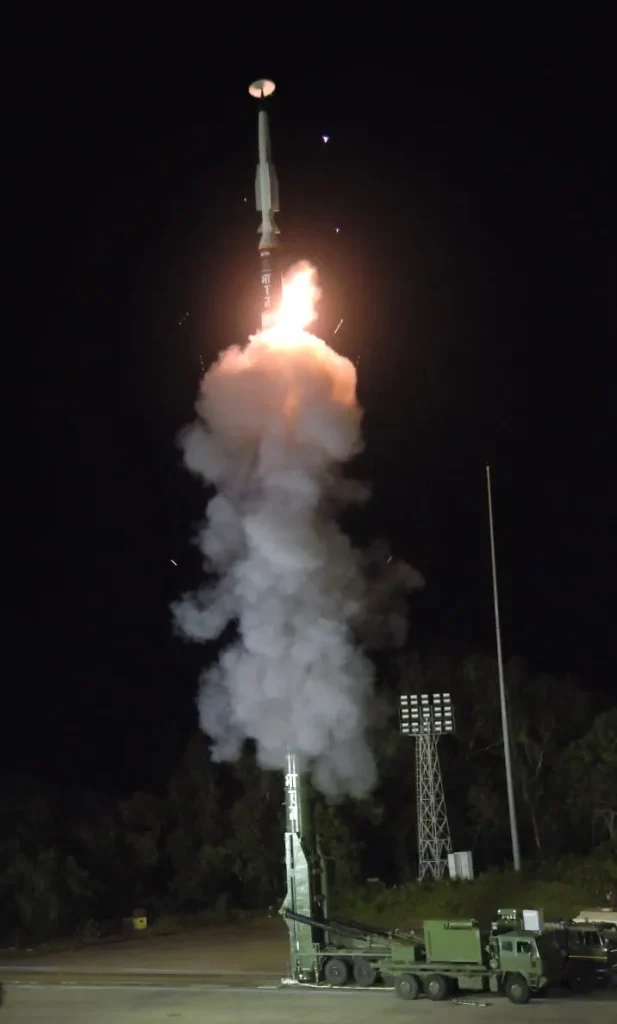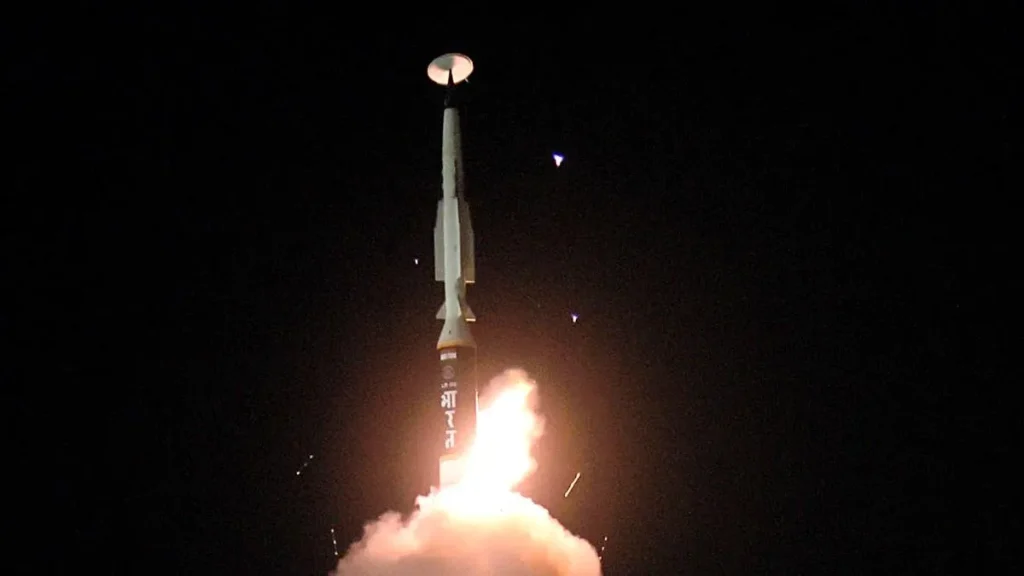India’s Defence Research and Development Organisation (DRDO) successfully conducted a flight test of the country’s first long-range hypersonic missile on November 16, 2024. The test took place at Dr. APJ Abdul Kalam Island, off Odisha’s coast. This advanced missile, capable of carrying various payloads, can cover distances exceeding 1,500 kilometres, enhancing the capabilities of the Armed Forces.

Accurate and Precise Performance
The missile’s performance was tracked through multiple systems across different locations. Data from ships stationed downrange confirmed that it accurately executed its final manoeuvres, hitting the target with precision.
Collaborative Efforts in Development
Developed at the Dr. APJ Abdul Kalam Missile Complex in Hyderabad, the missile is a product of collaboration between DRDO labs and industry partners. Senior DRDO scientists and Armed Forces officials witnessed the successful test.
Recognition from Defence Minister
Defence Minister Rajnath Singh hailed the test as a historic milestone, positioning India among the elite group of nations with hypersonic missile capabilities. He congratulated DRDO, the Armed Forces, and industry partners for their contributions.
Understanding Hypersonic Weapons
What Are Hypersonic Weapons?
Hypersonic weapons travel at speeds at least five times faster than the speed of sound, ranging from Mach 5 (6,100 km/h) to Mach 20 (24,140 km/h). Their high speed and manoeuvrability make them extremely difficult to detect and intercept, giving them a strategic edge.

Types of Hypersonic Weapons
- Hypersonic Glide Vehicles (HGV): Launched via rockets, these vehicles separate and glide toward their targets at hypersonic speeds.
- Hypersonic Cruise Missiles (HCM): Powered by scramjet engines, these missiles use compressed air and supersonic combustion for sustained high-speed flight.
Why Are They Significant?
Hypersonic missiles provide a major strategic advantage by outpacing and outmanoeuvring current defence systems. As former U.S. General John Hyten noted, their near-undetectable speed and agility make defending against them nearly impossible.
Hypersonic vs. Ballistic Missiles
While ballistic missiles can also reach hypersonic speeds, they follow a predictable, fixed trajectory. In contrast, hypersonic missiles can change direction mid-flight, making them far more elusive and dangerous.
Global Perspective
Experts have called for innovations like space-based radar systems to improve detection. However, as of now, hypersonic weapons remain one of the most challenging threats to counter.
